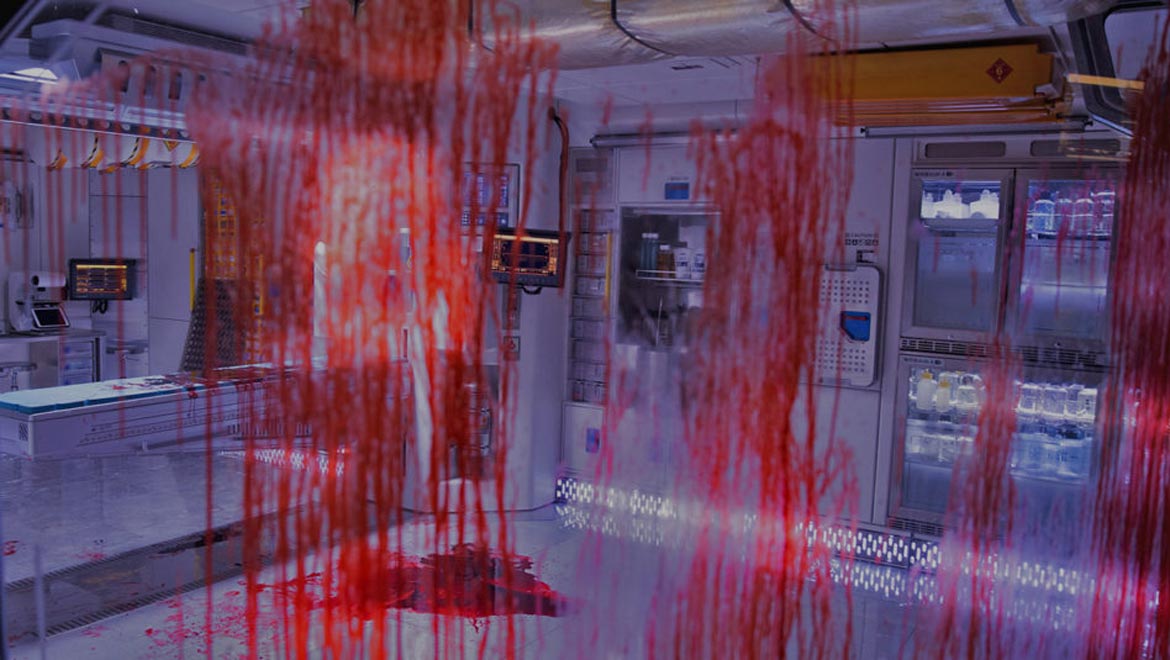PRESS AND NEWS CENTER
Technicolor Experience Center’s Marcie Jastrow: “Alien: Covenant In Utero” Showcases How VR Can Be Leveraged To Maximize Theatrical Assets.
The decision to create a VR rendered piece for “Alien: Covenant” was made early on, as filming for the movie was already underway...

- The decision to create a VR rendered piece for “Alien: Covenant” was made early on, as filming for the movie was already underway. Twentieth Century Fox, FoxNext VR Studio, RSA VR, MPC VR, a Technicolor company, Mach1 and technology partners AMD RADEON and Dell collaborated on Alien: Covenant In Utero, a virtual reality experience.
- VR crews were sent on location to take scans of the props and sets to create an authentic and high-quality VR experience.
- To ensure the VR experience met Director Ridley Scott’s expectations, MPC and Technicolor relied on their legacy with the franchise and a robust VR pipeline to ensure image quality and cinematic visuals for a VR experience.
- MPC tapped into the expertise of the Technicolor Experience Center and Technicolor’s Research and Innovation division to create the VR experience.
- Technicolor believes immersive experiences offer a new medium for our studios partners to extend content, not just for promotional pieces, but for interactive experiences that create new revenue streams.
THERE’S A LOT OF BUZZ AROUND THIS NEW PROJECT, ALIEN: COVENANT. THERE IS A VIRTUAL REALITY COMPONENT THAT’S COMING OUT AHEAD OF THE RELEASE, AND IT TOO, IS GENERATING A LOT OF BUZZ. CAN YOU TELL US A BIT ABOUT THIS IMMERSIVE EXPERIENCE?
Jastrow: Coming off The Martian, Jen Dennis from RSA VR contacted me about potentially working on a rendered piece for Alien. We had a conversation and we were off to the races.
We were able to leverage the existing film pipeline used for the visual effects that were being developed by MPC for the theatrical release.
We sent a production crew and a VR crew down to Australia where they were physically filming the movie. We took scans of all the different props and sets so that we could create an authentic VR experience for Alien: Covenant In Utero.
GIVEN THE LEGACY OF THIS STORY AND ITS IMPACT ON AUDIENCES, THERE MUST HAVE BEEN A TREMENDOUS AMOUNT OF PRESSURE TO ENSURE THE 360-DEGREE VIDEO EXPERIENCE REMAINED TRUE TO THE FRANCHISE. WHAT KINDS OF CONVERSATIONS DID YOU HAVE WITH DAVID KARLAK, THE DIRECTOR, ABOUT MAINTAINING THE CONTINUITY OF THE EXPERIENCE?
Jastrow: We had a lot of conversations at the very beginning about what it would take to create a high-image quality VR experience. It definitely had to be a step above any experience that has been created before because Ridley wanted to make sure that the assets were used properly and that the look of the film and the creative intent of the film were properly executed in the VR experience.
There were also a lot of conversations about making sure that we would be able to capture the scariness of the alien creatures and the actual creative environment around them. We had to live up to Ridley’s expectations or it was never going to work.
THE OTHER FASCINATING PART OF THIS STORY IS HOW QUICKLY THIS GOT TURNED AROUND. WHAT DOES THIS SAY ABOUT THE MATURITY OF VR PRODUCTION FLOWS? AND WHAT LESSONS DO YOU THINK WE’VE LEARNED FROM A CREATIVE AND PRODUCTION PROCESS MANAGEMENT PERSPECTIVE?
Jastrow: We were able to leverage the film pipeline and also leverage the people who were working on the film. Charlie Henley, who was the visual effects supervisor, played a critical role in the VR experience by making sure that the assets were properly created on the VR side.
So, maybe it is not necessarily about the maturity of VR itself, but rather more about the fact that MPC and Technicolor could take the range of talent and technology and use it to build a robust virtual reality pipeline for simultaneous use during a theatrical film pipeline. On the technology side, MPC utilized both AMD RYZEN and RADEON technologies based within DELL Inspiron systems to build the VR piece.
ONE OF THE THINGS THAT YOU HAVE RECEIVED QUITE A BIT OF CREDIT FOR IS CONNECTING DOTS. THERE ARE A NUMBER OF DIFFERENT PLAYERS THAT HAD TO COME TOGETHER TO MAKE THIS HAPPEN. TELL ME A LITTLE BIT ABOUT MANAGING ALL OF THOSE DIFFERENT PARTS?
Jastrow: I think the biggest issue you have at this point is the fact that VR is still nascent. There are still a lot of issues surrounding pipeline and image quality. We must find the right people who can build bridges between the two worlds – of a very mature movie business and a very nascent VR business.
ANY LAST THOUGHTS?
Jastrow: The whole concept of being able to keep creative intent inside a VR experience is extremely important. You need to stay true to the theatrical while expanding to create a VR experience.
One of the problems that’s happening in theatrical right now is that millions of dollars are being spent on large projects and then you never see those assets again. One of the most significant contributions Technicolor can provide through VR experiences such as Alien: Covenant In Utero is the proof that the reuse of assets keeps content alive and can open up new revenue streams.